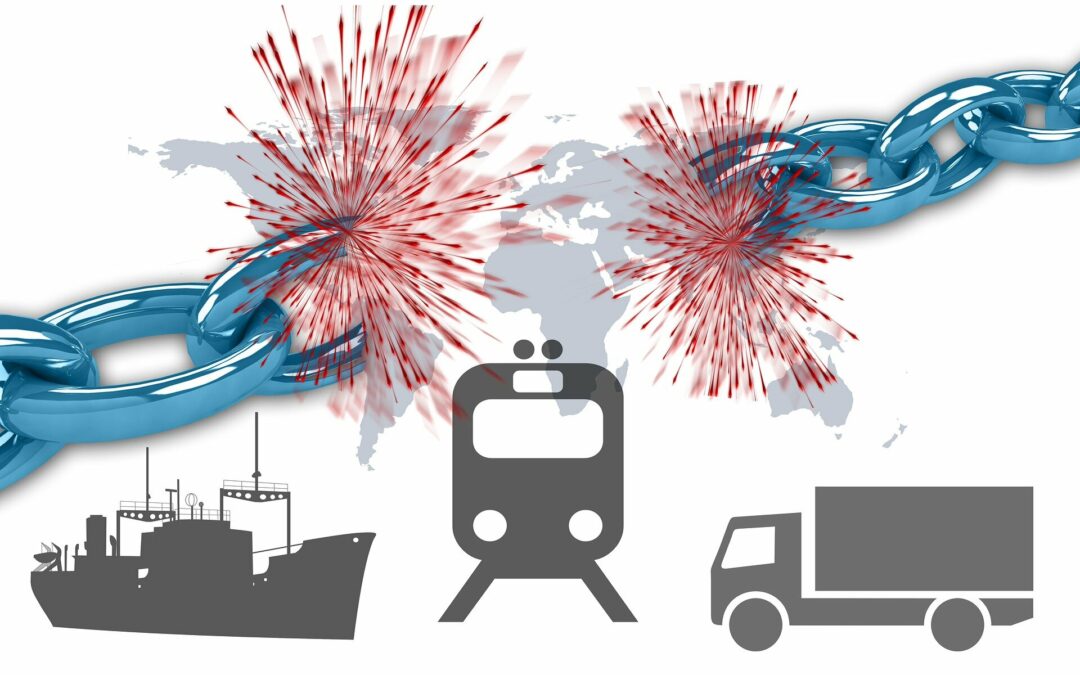SAN MATEO, Calif., Feb. 1, 2023 /PRNewswire/ — Disruption and uncertainty have become the new normal for the global supply chain. A majority (82%) of supply chain leaders anticipate challenges will worsen or stay the same during the next 6 to 12 months according to new survey data from Coupa Software (NASDAQ: COUP), the leader in Business Spend Management (BSM).
During 2022, more than 4 in 5 organizations experienced at least one significant supply chain disruption, and 50% experienced three or more. With continued or worsening conditions, consumers should prepare for sustained impact on essential items. Supply chain leaders predict that food, gas, and computer chips are most at risk of impact in 2023.
Supply Chain Leaders Battle Increasing Costs
This year will undoubtedly have a myriad of challenges for supply chain leaders who anticipate the largest disruptions will be increased costs (related to transportation, production, raw materials) and geopolitical uncertainties. When it comes to financial and operational concerns supply chain leaders are concerned about:
- A lack of sufficient, reliable transportation/shipping capacity (28%)
- Continued shortages of critical parts or other goods (33%)
- Uncertainty in customer demand (27%)
- Cost and logistical challenges of implementing new supply chain design, contingency planning, and/or technology solutions (28%)
“Consumers continue to face a barrage of shortages of essential goods and are growing impatient with the continued impact on their daily lives. Over the last twelve months consumers have faced shortages from tampons to Tylenol, and everything in between,” said Dr. Madhav Durbha, vice president of supply chain innovation at Coupa. “With climate change and geopolitical tensions expected to impact food and cause disruptions, now is the time for supply chain leaders to take initiative and be creative as to how they can invest and improve their operations.”
Make Suppliers Central to Win in 2023
Suppliers are increasingly becoming a vital part of the disruption mitigation equation. When it comes to improving their companies’ supply chain issues, 40% of all supply chain leaders surveyed indicated that building healthy supplier relationships ranks in their top two priorities.
Suppliers are central to a number of mitigation strategies companies are implementing or planning to implement over the next 6 to 12 months, including:
- 28% are reducing dependency on suppliers from any one region
- 28% are relying on suppliers that are geographically closer to production and distribution facilities
- 31% are planning to strengthen relationships with their current suppliers and/or buyers
“As disruptions persist, it’s critical for organizations to prioritize improving their relationships with suppliers,” stated Durbha. “When supply gets constrained and capacities and materials go on allocation, suppliers tend to prioritize their preferred customers. Organizations are gaining this status as ‘preferred customers’ through collaborating with suppliers by providing visibility into their anticipated demand and ensuring payments happen on time.”
Investments in Digital Supply Chain Solutions Grow
With expectations of continued supply chain challenges, it’s paramount that leaders take efforts to rethink their supply chain to prevent the consequences consumers experienced over the last few years. One positive sign – 79% of leaders surveyed indicated their company plans to invest in agility and resiliency for their supply chain in 2023.
Leaders see digital solutions as a key to ensuring product availability, improving customer experience, and reducing overall risk, but 79% of all decision-makers surveyed reported not having all of their functions digitized or not knowing if they are fully digitized. A majority (83%) are already investing in digitizing their supply chain or plan to in the next 12 months.
Dive into the full report, The State of Supply Chains: 2022 Reflections and 2023 Priorities here.
READ THE FULL ARTICLE HERE

